Control of larger aquatic plants can cause some reduction in water loss
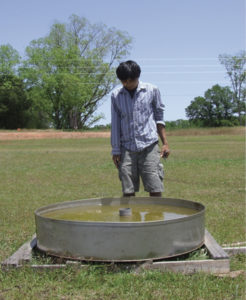
Evaporation is the return of water vapor to the atmosphere through diffusion of water molecules from land, vegetation, water bodies and other moist surfaces. However, evaporation most commonly is used in reference to water loss from surfaces of water bodies or other non-living objects, while water loss from vegetation is called transpiration. The total water loss through diffusion of water molecules into the atmosphere usually is called evapotranspiration.
Relative humidity
The pressure exerted by water vapor in air (vapor pressure) is measured in millimeters of mercury (mm Hg). Air at a particular temperature can hold a specific amount of water vapor. This quantity is known as the saturation vapor pressure (Table 1). Saturation vapor pressure increases with rising temperature.
Boyd, Saturation vapor pressure, Table 1
| Temperature (° C) | Saturation Vapor Pressure (mm Hg) |
|---|---|
| 0 | 4.579 |
| 5 | 6.543 |
| 10 | 9.209 |
| 15 | 12.788 |
| 20 | 17.535 |
| 25 | 22.377 |
| 30 | 31.695 |
| 35 | 42.175 |
| 40 | 55.324 |
The relative humidity of air is a measure of the percentage of the vapor pressure holding capacity of a particular parcel of air. Completely dry air has a relative humidity of 0 percent, while air saturated with water vapor has 100 percent relative humidity. At relative humidity below 100 percent, water molecules diffuse from moist surfaces into the air, but at 100 percent relative humidity, net movement of water molecules from a moist surface to the air ceases.
Factors affecting evaporation
Other factors influencing evaporation are solar radiation, air and water temperature, and wind velocity. Solar radiation and temperature are closely related, and as temperature increases, the energy content of water molecules increases, making them more likely to diffuse into the air. Also, warmer air has a greater capacity to hold water vapor. The air directly over a moist surface can quickly become saturated with water vapor, but wind will move the saturated air away and replace it with drier air so that evaporation continues.
Turbidity caused by plankton blooms or suspended soil particles increases the rate of absorption of solar radiation as light passes into a water body. This results in higher water temperature and favors greater evaporation. Salinity also has a minor influence on evaporation. The evaporation rate from seawater usually is about 5 percent less than from freshwater.
Transpiration from plants is influenced by the same factors that influence evaporation from other moist surfaces. However, plants are rooted and can obtain water from within the soil mass when the soil surface is too dry to support evaporation.
Water bodies always present a moist surface for evaporation, but plants also can increase evaporation from water bodies. The area of leaves for some species of emergent or floating aquatic plants can be several times greater than the water surface they cover.
Thus, even though plant leaves have mechanisms for reducing water loss, transpiration by stands of aquatic plants with dense foliage, such as water hyacinths and cattails, can exceed the rate of evaporation from a free water surface. Plants that cover the water with a single layer of leaves – including duckweeds, water lilies and lotus – can depress evaporation from a water surface.
Measuring evaporation
The Class A evaporation pan is probably the most common device for measuring evaporation. The amount of water lost from this pan (corrected for rainfall input) is measured daily and can vary greatly with location. The evaporation measurements also vary with weather conditions and season. The most favorable condition for evaporation is warm air over warm water, while cold air over warm water, warm air over cold water, and cold air over cold water, are less favorable for evaporation.
In general, evaporation proceeds most rapidly during warmer months. In Auburn, Alabama, USA, for example, pan evaporation averages 25.9 mm in January, when the mean air temperature is 7.0 degrees-C, but 197.4 mm in June, when air temperature has a mean of 25.1 degrees-C.
Pan evaporation also tends to be greater at lower latitudes. So in the United States, pan evaporation in Florida (at 25 to 30 degrees N latitude) averages 1,600-1,950 mm/year, while in Maine (at 43 to 48 degrees N latitude), it averages 700-900 mm/year. The highest evaporation rates in the desert area of southern California (35 degrees N latitude) average about 3,000 mm/year.
Class A pan evaporation is either not measurable or very low during cold weather or on overcast, rainy days, but on hot, windy days, it can exceed 20 mm. Evaporation from Class A pans exceeds the evaporation from most water bodies, because water in the small pan becomes warmer than a large volume of water exposed to the same amount of insolation. A pan coefficient of 0.7 typically is multiplied by Class A pan evaporation to estimate evaporation from larger water bodies. For estimating aquaculture pond evaporation from Class A pan evaporation, a pan coefficient of 0.8 should be used.
Class A pan evaporation of 10 mm/day equates to 8 mm/day for a pond. This does not seem to be a large amount of water, but when this depth of water loss is spread over a large surface, it represents a relatively substantial volume – 80 m3/ha/day or 2,400 m3/ha/month.
Limited control
Not much can be done to reduce evaporation loss from a pond or other water body. There has been limited success using aliphatic alcohols to form monomolecular layers over surfaces of water supply reservoirs to retard evaporation. However, wind action reduces the effectiveness of this procedure, and aliphatic alcohols certainly would not maintain a surface film in an aerated pond. Moreover, it is not known how the film affects gas transfer across the water surface – a critical process in aquaculture.
The control of larger aquatic plants can cause some reduction in water loss from ponds and other shallow water bodies. These plants are typically considered to interfere with aquaculture management and usually are removed from ponds for reasons other than evaporation control.
Most aerators splash water into the air to increase the surface area between water and air and accelerate oxygen transfer. This action also allows a more rapid diffusion of water molecules into the air. Preliminary trials have showed that continuous aeration with paddlewheel aerators at 5 hp/ha might increase evaporation loss by 10 percent. Of course, most of the increase in evaporation occurs during the day, and in many types of pond aquaculture, daytime aeration is seldom necessary.
One common technique for lessening water loss in storage reservoirs is to maximize depth. Evaporation occurs from the surface, so a 2-meter-deep water body and a 5-meter-deep reservoir would lose the same amount of water to evaporation. However, if the loss is 20 cm/month, the proportion of the stored water lost to evaporation would be 10 percent in the shallow reservoir but only 4 percent in the deeper reservoir.
(Editor’s Note: This article was originally published in the May/June 2012 print edition of the Global Aquaculture Advocate.)
Author
-

Claude E. Boyd, Ph.D.
Department of Fisheries
and Allied Aquacultures
Auburn University
Auburn, Alabama 36849 USA[117,100,101,46,110,114,117,98,117,97,64,49,101,99,100,121,111,98]
Tagged With
Related Posts
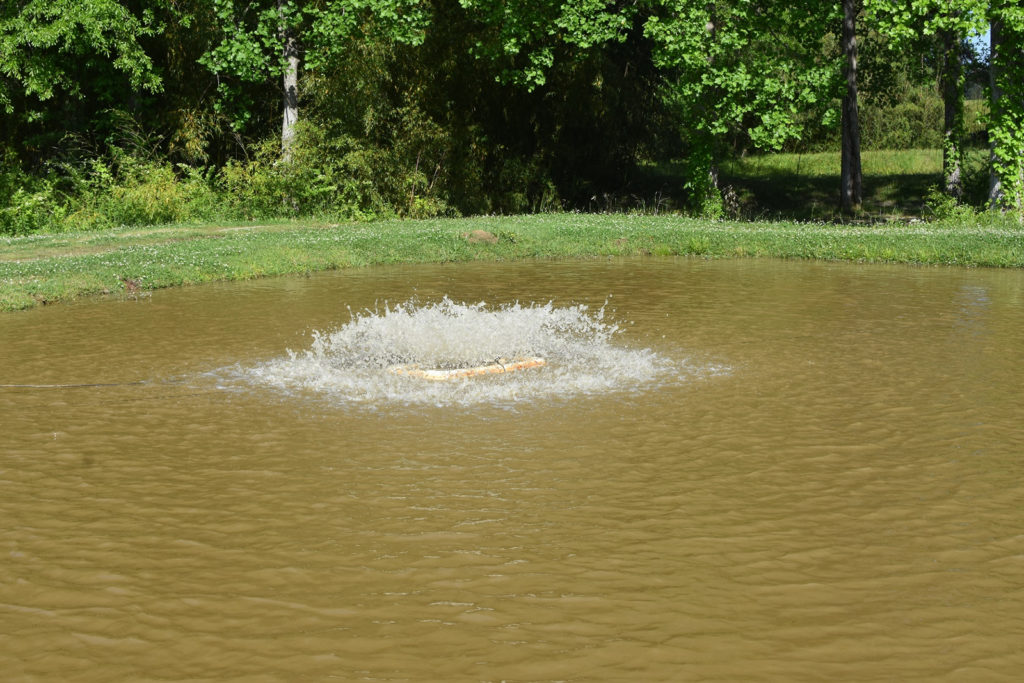
Responsibility
Effects of mechanical aeration on evaporation rate, water temperature
This study compared water temperature and water loss by evaporation in control ponds and in ponds aerated with surface aerators at four different aeration rates. Increased aeration rate increases the evaporation rate, which in turn lowers water temperature.
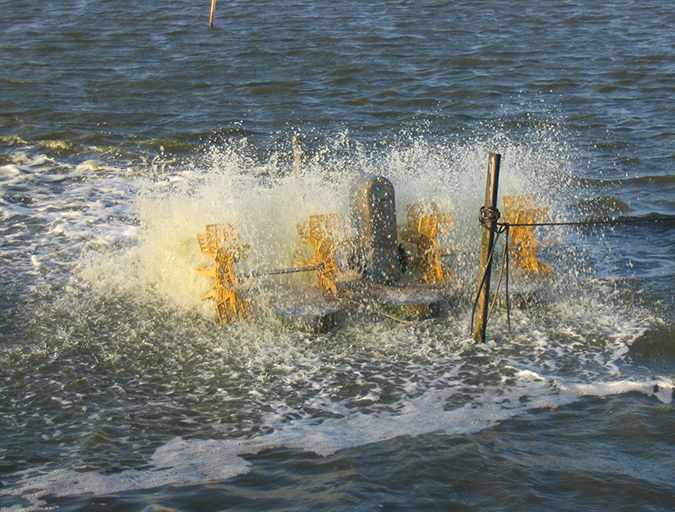
Responsibility
Does Coriolis force impact aerator placement in aquaculture ponds?
The Coriolis effect has no bearing on aerator placement and aquaculture pond management. The most important consideration with mechanical aeration is to provide a sufficient amount to maintain adequate dissolved oxygen concentration.
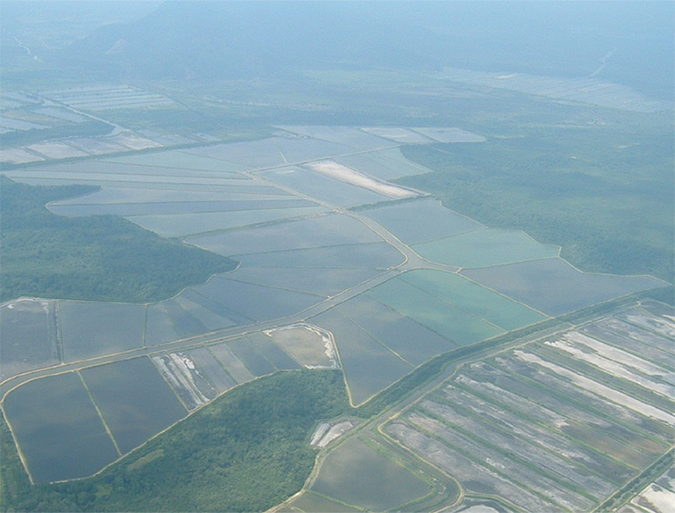
Responsibility
Reviewing the ‘near-magical’ properties of water
Understanding the hydrologic cycle, water’s unique physical properties and their behavior in aquaculture systems – phases, humidity, saturation, stratification, light reflection and refraction – is pertinent to properly manage water quality in production systems, according to world-renowned expert Dr. Claude Boyd.
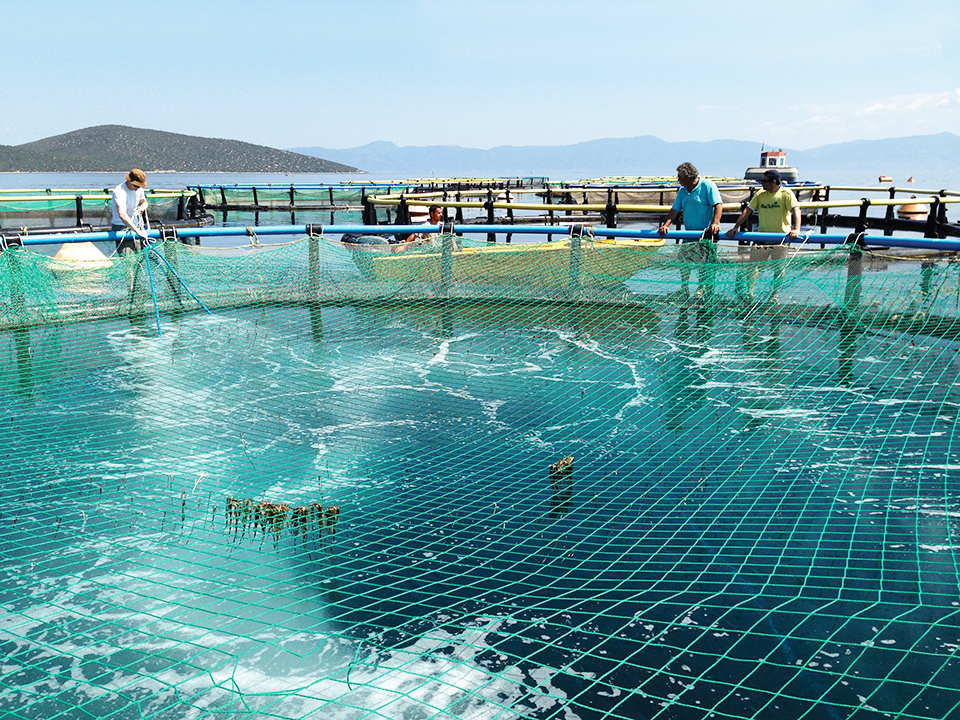
Health & Welfare
Diffused-air system improves oxygen levels in sea cage culture
Traditional sea cage culture typically relies on natural water exchange to replace oxygen consumed by fish, which may not provide sufficient oxygen – especially during seasonal periods of high temperature.

